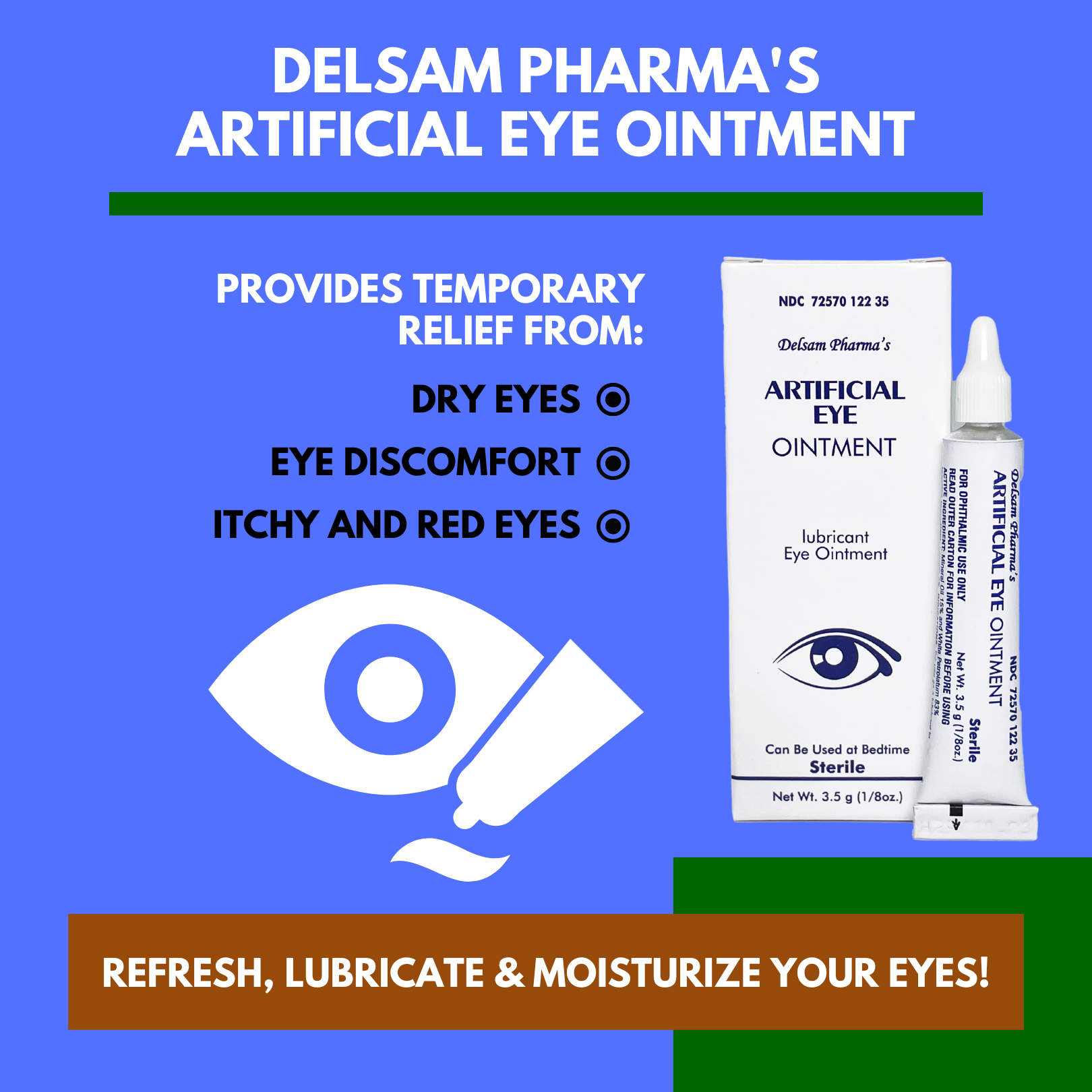ARTIFICIAL EYE OINTMENT

















ARTIFICIAL EYE OINTMENT
For use as a lubricant to prevent further irritation or to relieve dryness of the eyes. Lubricants are the first-line treatment for many causes of eye irritation, in particular for dry and red eyes.
Lubricants are the first-line treatment for many causes of dry eye
What is an Eye Ointment?
Along with drops, ointments are used to treat many eye problems. Because they go right into your eye, they can start to work much faster than medicine you take by mouth.
Eye ointments are drugs in a greasy, semisolid form. Your body warmth makes them melt. Once you apply ointment to your eye, it breaks into tiny drops. These hang out between your eyeball and eyelid for a while. That’s what gives the medicine time to work. Eye ointments are a safe treatment. Most people handle them well. But they might sting or make your sight blurry. Because of that, your doctor may suggest you use them right before bed.
Why Do You Need It?
You could be given eye ointment for a number of reasons. Different types are used to prevent or treat:
Acute or long-term eye problems
Eye infections
Inflammatory conditions
Soreness, as you might have with dry-eye syndrome
Most ointments require a prescription. But you can buy some mild versions, like the ones that treat dry eyes, over the counter.
How Do You Use It?
Follow these steps:
Wash your hands. It’s important that they’re clean before you apply the ointment.
Hold the tube in your hand. This helps warm the ointment so it flows more easily.
Look at the ceiling. Tilt your head slightly. You want the ointment to flow away from your nose.
Hold the tube of ointment close (within 1 inch) of your eye.
Gently pull down your lower lid to create a pocket-like opening.
Squeeze a tiny amount of ointment (about the size of a grain of rice) into your eye. When you’re done, spin the tube a little. This helps the ointment fall into your eye.
Keep looking at the ceiling. Let your eyelid go. Softly close your eye for a minute. This helps your eye absorb the medicine eye. It may sting for a moment.
Wash your hands again.
Your eyesight may be cloudy or blurred at first. This is normal. So is mild redness of your eye. If you put too much in, it’ll be hard to see and it will probably feel gunky.
Use clean tissues to wipe off any extra ointment around your eye. Wipe the top of the tube before you replace the cap. It’s important that the tip of the tube never touches anything. This includes your eye, fingers, and bathroom counter.
What Else Should You Know?
Your eyelashes and eyelids may get sticky. Gently clean both with a warm, wet washcloth or compress after each use. If there is dried residue, you can also wash the area with a little watered-down baby shampoo, then rinse. If you normally wear contact lenses, you shouldn't use them until you’re done with your ointment. It could damage your lenses. Your doctor may prescribe both eye drops and an ointment. If so, put the drops in first and wait a few minutes before you use the ointment. This helps the medicine get into your eye and start working.
If you miss a dose, apply the ointment as soon as you can. If it’s close to the next time you’re supposed to use it, wait until then. Don’t add more to make up for what you missed. To put ointment into your child’s eyes, have them sit in a chair and tilt their head back. Or they could lie down. You may need to wrap a baby in a blanket to keep their arms and legs still.
The ointment should help your eyes feel better. If you’re taking it for the long term and notice that your eyes feel worse, tell your doctor. They may need to change your treatment. Some products can clog your tear ducts over time and make dry-eye syndrome worse.
The medicine in your ointment could affect other drugs, vitamins, or natural supplements you’re taking. Make sure your doctor is aware of everything you use on a daily basis. If you’re pregnant, think you’re pregnant, or are breastfeeding, tell your doctor.
Don’t keep prescription eye ointment longer than 28 days. You can take it to your pharmacist to get rid of it safely.
If you have any questions about your ointment, ask your doctor.